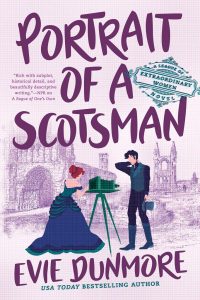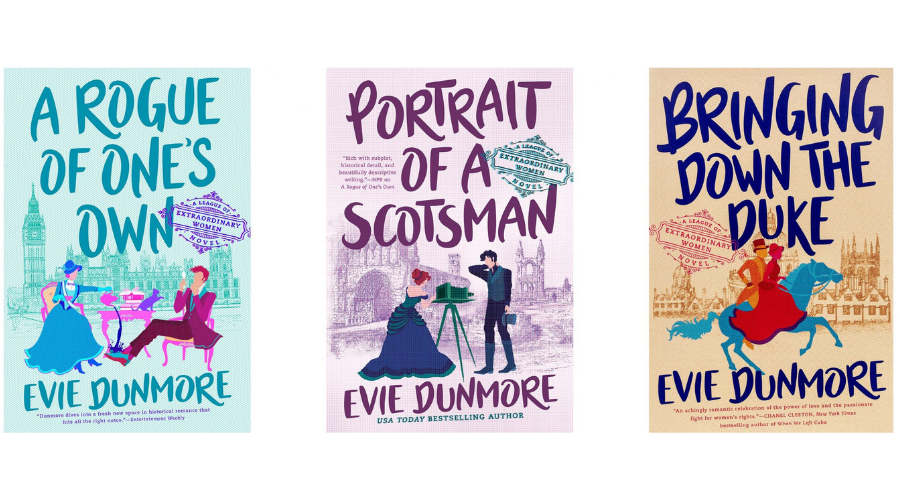Evie Dunmore’s historical rom-com series A League of Extraordinary Women continues with Portrait of a Scotsman. In the third iteration, we meet Hattie Greenfield, a banking heiress who locks horns (and lips) with Lucien Blackstone a self-made millionaire. Caught in a compromising position by an audience, Lucien and Hattie find themselves at the wedding altar before they can catch their breath. While Hattie is attracted to her husband, she had hoped to marry for love, whereas for Lucien, marrying a woman from high society brings with it a certain respect for him among his peers that eluded him all his life because of his working class background.
Personality clashes abound as both adjust to married life; he’s churlish, and she’s talks a mile a dozen, the start to wedded bliss is rocky. A trip up north, to Lucien’s hometown in Scotland offers a much-needed respite, and surprisingly both find themselves fighting for a common cause — rights of the workers. Hattie leads the agency in identifying and canvasing for the rights of the miners (men, women, and children) in a mine, which Lucien owns. Backed by his support, our odd duck of a couple start learning more about each other; easily the most swoon-worthy part of the book, as wedded bliss beckons.

Image via: Berkley
But, Lucien’s desire for revenge against a man from his past and Hattie’s unfulfilled desire to be someone in her life, threatens to set them off on different paths, once again. Rich in historical details, like its predecessors, Dunmore’s latest is a lush historical series, worthy of the echelon it finds itself in. While the struggle of the suffragist movement might find itself in the backseat in this book of the series; it is heartening to see a character be inspired from the feminist ideals espoused and fought for in the previous books and apply it to her situation to reclaim herself as an independent woman capable of making a choice, is truthfully narrated in the final act of the book. The end, which has divided readers online, actually marks a refreshing turn in historical romances, where women often aren’t rewarded for their choices. Undoubtedly entertaining with well-drawn out characters, the Portrait Of A Scotsman is a true winner.
If you are in the mood for some more historical romances, you could pick up the earlier two books in the series.
Bringing Down The Duke

Image via: Berkley
In Bringing Down The Duke, Annabelle Archer who is on a scholarship from National Society For Women’s Suffrage to Oxford University is recruited by them to help convince the most influential individual in parliament, Sebastian Devereux, the Duke of Montgomery to vote to overthrow the The Married Women’s Property Act. Both notice each other and as they find themselves in each other’s company at social do’s often, they don’t fail to notice the spark of attraction that pulls them towards each other despite their widely opposing views on the act. A battle of wills ensues, and it remains to see if the Duke votes against the act or will Annabelle topple him to secure a win for women suffragettes everywhere.
Rogue Of One’s Own

Image via: Berkley
If enemies to lovers is your favourite trope then A Rogue Of One’s Own is a splendid book to pick up. A band of suffragettes led by Lady Lucie Tedbury are in the final stages of taking over a publishing house, when their plans are suddenly thwarted by Lord Tristan Ballentine. Lady Tedbury needs complete control of the press so she can print and distribute pamphlets educating women about the debits of the The Married Women’s Property Act. Lord Ballentine is willing to sell his shares to Lady Tedbury for a price — a night in her bed. As their rivalry escalates and leads to scandalous entanglements both in the boardroom and bedroom, both Lucie and Tristan realise that all is truly fair in love and war.
























